
Valentine Hearts Strings
From Robot mics, to shunning the classics for junk store gear and locking guitarists in a Faraday cage, Eric Valentine isn’t afraid to experiment with guitar sounds.
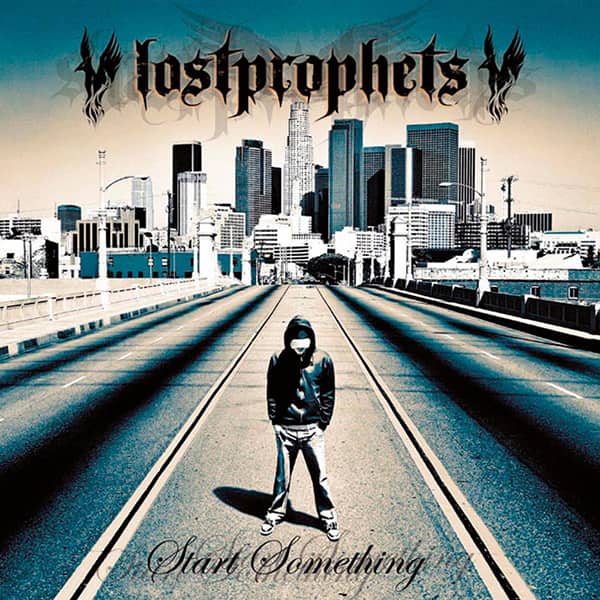


Eric Valentine doesn’t know what it means to settle. The Vari-Cap instrument cable is just one small example of what he’ll achieve when he gets a little restless. He showed AT around Barefoot Studios, where he’s in the throes of dividing his main live room in half. Most studio owners wouldn’t dare chop up a gorgeous live room, but he’s been there over a decade now and felt the space was getting a little too predictable for him.
Valentine’s designed and built custom consoles with a perforated top to minimise surface reflections, erected Faraday cages to cut down guitar hum, and built a remote mic positioning robot just for guitar cabs. AT asked him about those guitar innovations and how far he’s gone with Queens of the Stone Age and Lostprophets to get unique sounds.
ROBOTIC APPROACH
AudioTechnology: What prompted you to spend the time and $2k building a robot just to move a mic around?
Eric Valentine: The idea for the guitar robot came about when I got a guitar sound I liked and the time came to try and recreate that exact guitar sound. We document everything as detailed as we possibly can; take pictures of the mic position, pictures of the pedals, amp settings, everything. But when we set it all back up, it just didn’t sound the same. It never sounded the same.
The smallest change in mic position would cause very audible differences in the sound. There’s a lot of weird reflections and filtering going on as you move the mic tiny distances.
The robot was the only way I could find that spot without having to endlessly run back and forth. Plus, I could sit in front of the speakers in the control room and listen to how it was changing as I was moving it around. That was the biggest thing; making adjustments to the mic position while listening in the monitoring environment I’m familiar with. It means I can decide if a change is making a difference.
I also collaborate with artists who don’t have a band and play drums and guitar on the project. It means there’s a lot of times I’m in here myself and I don’t necessarily need someone hanging around all day for that single five-minute window when I need a microphone plugged in.
Sometimes I’ll adjust it entirely by ear because I haven’t bothered to setup a video camera and it’ll end up in a really weird spot I never would have thought of. Like in the middle of the cabinet in-between two speakers.
There are limitations to its range of movement, so it’s not like a remote control car that will end up over the other side of the room. It uses a linear slide, which is often implemented in automotive manufacturing. It’s basically just a rail that has a little wheeled carriage on it and a motor that pulls it back and forth. The slide has a limited range, the second generation version I’m using is a foot-and-a-half long. Then you have three axes of movement — in and out, up and down, left and right. This second generation one also has a little controller with a digital readout and position storing. I can find a spot I like, store it and see if I can beat it, then go back and forth and see which one I like better.
You can put any mic on there: Shure SM57, I use Beyer 160 ribbon mics a lot, and the Sennheiser 441 dynamic and RCA BK5 ribbon are both great.
AT: Position is one thing, but how do you decide which mic to start the process with?
EV: There are two ways I’ll start the mic selection process. I’ll either lean on my 20 years of experience recording, and go straight for the mic I know worked right on that amp for a particular type of sound. Or I’ll go totally random and force experimentation to happen. Take whatever microphone in the room is closest to the amp and point it that way. Sometimes there’s a bunch of mics hanging about in the room from the session and I’ll just start turning up faders and see what they sound like. Sometimes one will come up where you’d never think to use that mic in that position on that amp, but it sounds really cool.

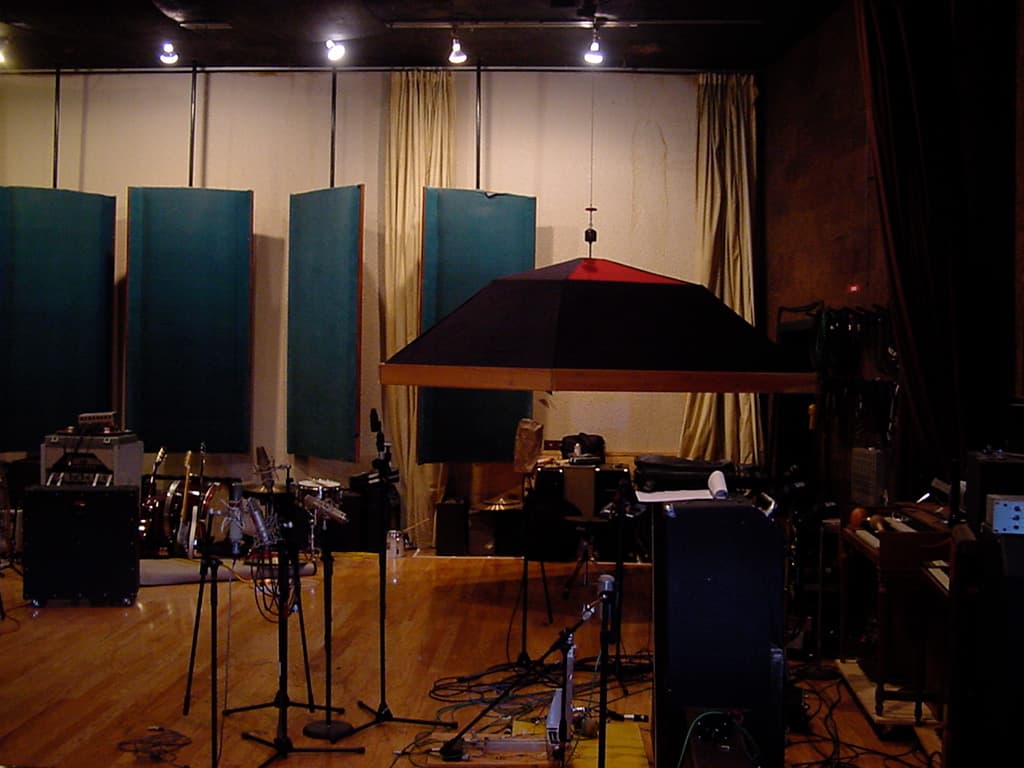
FAVOURITE COMBOS
AT: What are some of you favourite amp/mic combinations at the moment?
EV: I recently got this interesting amp. It’s actually a record player, called a Califone. It has a turntable and two speakers, but if you get the right model from the right era, it actually has a really desirable original Jensen Alnico 5 speaker in it. The amp is essentially just a Fender type amp with a 6L6 tube in it.
Miking it with a Sennheiser 441 is a very, very flattering combination. I did a record with Grace Potter that came out earlier this year and her guitarist, Benny, fell in love with it. We miked both the front and the back of the speaker with 441s maybe a couple of inches away from the grille of the speaker cabinet.
The BK5 RCA ribbon mic on my Fender Vibroverb is a great combination that’s been used on a lot of records.
I’ve got a Vox AC30 I really like. I use Neumann M582 tube condensers about 8-12 inches away and again have them on the front and back on the cabinet. I flip the phase and blend them. If it’s really freaking in the mid-range I’ll put a really low, low-pass filter on there. The signal you pick up off the back of the cab just has a different resonance to it that I don’t feel I can get by using EQ on the front mic. It makes it deeper and heavier sounding, without messing with the high-end clarity you get from the front.
It all depends on the key and what’s going on in the song, but most of the time I’ll get rid of everything below 100Hz on both channels, sometimes higher to make room for other things.
I’ve experimented with it on closed-back cabinets, because I heard it was something Mutt Lange did, but I never have any luck with it. Maybe it’s an erroneous rumour. But any combo open-back speakers, I’ll put something on the back.
For classic rock sounds, I have some really great vintage Marshall amps here that I put through a four by 12 and mic up with either a Shure SM57, Beyer M160 or even the Sony C37A. That’s for a Jimi Hendrix-style of sound. That mic was used for some of his recordings. It’s just a great sound; a Marshall and a four by 12 is tried and true.
It was actually kind of great to make guitar players go sit in a cage, they deserve it
LIMITLESS LIMITATIONS
AT: As a producer and engineer, how does song arrangement and guitar sound choice intersect for you?
EV: I’m always looking for ways to be able to hear all the parts and ideas in a song. If the rhythm guitar is played with a particular guitar and amp setup, we will not use that for lead guitars or overdubs.
If you want to sound unique, imposed limitations can really help.
Josh Homme is very much about that for Queens Of The Stone Age. The classic magic combinations that sound incredible like a Les Paul through a Marshall with a 4 x 12 cab is something he will never ever use. Because everybody uses it, he imposes that limitation on himself.
It forces his stuff to sound different and it can be a struggle. For Songs for the Deaf we went to this place called Black Market Music, which is a graveyard for broken, shitty band equipment and bought all the shittiest stuff in that place. A bunch of garbage like old Peavey Musician 3 transistor amp heads and brought it back here to see what we could pull out of them. We used a lot of that stuff on the record.
AT: What’s the weirdest thing you’ve done to get a guitar sound?
EV: On the Lostprophets record Start Something we decided to try high-gain heavy guitar sounds with single coil pick-ups, because we realised it was something people never do. It was a Les Paul Junior and Lee [Gaze] was playing a lot with a Jazzmaster.
It was really challenging because you have no humbucking so the guitar’s just buzzing like crazy. We had to build a Faraday Cage to be able to have that much gain on single coil guitars. We were determined to do it so we just made it work.
I bought these 4 x 8 foot sheets of pulled steel and made a completely enclosed cage with a little door that would wire shut. There was a monitor speaker in there and the guitar players would have to sit in this cage and play their parts. It was actually kind of great to make guitar players go sit in a cage, they deserve it.
But it really worked. Hold the guitar outside the cage and it’s just humming. As soon as you went inside the cage it would go away.
It wouldn’t have worked without the cage. If you were trying to hit a note and have it sustain out, it would just turn into a really loud buzz; you couldn’t get any notes to decay and fade off. When you’re playing full volume you might be able to get away with it, but it takes away the focus from the sound because any time you lift off that buzz starts filling in all the gaps.


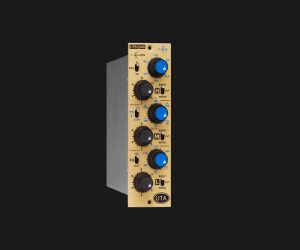


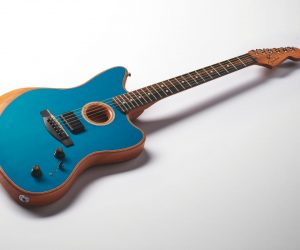
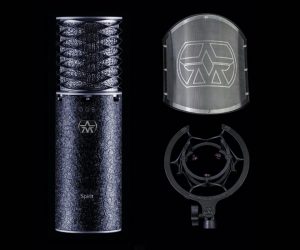


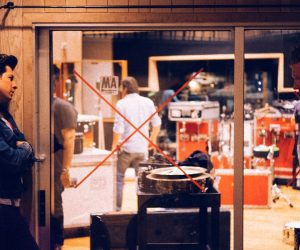






RESPONSES